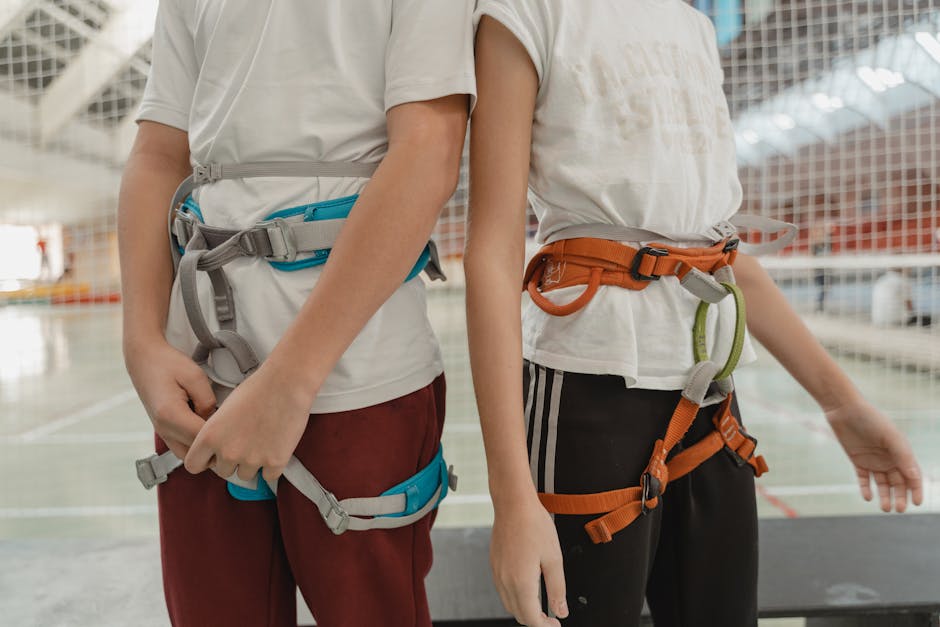Exercise Daily _ Low Impact Workouts For Teenagers Recovering From ACL Surgery
Recovering from an Anterior Cruciate Ligament (ACL) surgery can be a daunting journey, especially for teenagers eager to return to their favorite sports and activities. Low impact workouts are a crucial component of rehabilitation, yet misconceptions about their effectiveness can lead to inadequate recovery strategies. This article will explore the best low impact workouts for teenagers recovering from ACL surgery, counter common myths, and provide evidence-based recommendations.
Understanding ACL Surgery and Recovery
The ACL is a critical ligament in the knee that stabilizes the joint during movement. When injured, surgical intervention often becomes necessary. The recovery process can be lengthy, typically spanning six months to a year, depending on the severity of the injury and the individual’s response to rehabilitation. During this time, a structured rehabilitation program is essential for restoring strength, flexibility, and function.
What Most People Get Wrong About ACL Recovery
Many individuals believe that complete rest is the best way to recover from ACL surgery. This misconception can lead to muscle atrophy and decreased joint mobility, ultimately prolonging recovery. In reality, low impact workouts can facilitate healing and enhance recovery outcomes.
According to a study published in the Journal of Orthopaedic Research, early initiation of physical therapy, including low impact exercises, significantly improves outcomes for ACL surgery patients. Boden et al. (2014) found that a structured rehabilitation program incorporating low impact activities resulted in faster recovery times and better functional outcomes.
Benefits of Low Impact Workouts
Low impact workouts offer several benefits during the recovery process:
- Reduced Stress on Joints: Low impact exercises minimize the risk of further injury by reducing the stress placed on the knee joint.
- Improved Circulation: Engaging in low impact workouts promotes blood flow, which is vital for healing tissues.
- Muscle Strengthening: These workouts help rebuild muscle strength around the knee, providing better support during the recovery process.
- Enhanced Flexibility: Maintaining flexibility is crucial for a full recovery, and low impact exercises can aid in achieving this.
Types of Low Impact Workouts for Teenagers
Here are some effective low impact workouts for teenagers recovering from ACL surgery:
1. Swimming
Swimming is one of the best low impact exercises available. The buoyancy of water reduces the weight on the knees, allowing for a wide range of motion without pain. It can also help improve cardiovascular fitness, which is essential for overall recovery.
2. Cycling
Stationary cycling is another excellent option. It allows for controlled movement without excessive strain on the knee. Start with short sessions, gradually increasing the duration and resistance as strength improves.
3. Elliptical Trainer
The elliptical machine provides a low impact alternative to running or jogging. It mimics the natural motion of walking but without the high impact forces. This exercise can help improve both strength and endurance.
4. Resistance Band Exercises
Resistance bands are versatile tools that can be used for strength training without heavy weights. Exercises such as leg presses, lateral band walks, and leg curls can help strengthen the muscles surrounding the knee.
5. Pilates and Yoga
Both Pilates and yoga focus on core strength, flexibility, and balance. These practices can improve overall body awareness and help in regaining control over the knee joint. Many poses can be modified to ensure low impact on the knees.
Creating a Balanced Workout Plan
When designing a workout plan, it is essential to incorporate various types of exercises to ensure a balanced approach. Here’s a sample weekly plan:
- Monday: Swimming (30 minutes)
- Tuesday: Resistance band exercises (20 minutes)
- Wednesday: Cycling (30 minutes)
- Thursday: Pilates session (45 minutes)
- Friday: Elliptical training (30 minutes)
- Saturday: Yoga (30 minutes)
- Sunday: Rest day or light stretching
Listening to Your Body
It’s crucial for teenagers recovering from ACL surgery to listen to their bodies. Pain is an indicator that something may be wrong. If any exercise causes discomfort or pain in the knee, it should be modified or avoided. Consulting with a physical therapist for personalized advice is highly recommended.
Nutrition’s Role in Recovery
Nutrition is a critical component of recovery from ACL surgery. Consuming a balanced diet rich in proteins, vitamins, and minerals can significantly impact healing. Focus on foods that promote muscle repair and joint health.
Recommended Nutrients
- Protein: Essential for muscle repair. Include chicken, fish, beans, and legumes.
- Omega-3 Fatty Acids: Help reduce inflammation. Sources include fatty fish, walnuts, and flaxseeds.
- Vitamin C: Important for collagen formation. Found in citrus fruits, strawberries, and bell peppers.
- Calcium and Vitamin D: Vital for bone health. Include dairy products, leafy greens, and fortified foods.
Sample Recipe for Recovery
Here’s a nutritious recipe that combines many of the recommended recovery nutrients:
Protein-Packed Quinoa Salad

Ingredients:
- 1 cup cooked quinoa
- 1 cup cooked chickpeas
- 1/2 cup diced bell peppers
- 1/2 cup chopped cucumber
- 1/4 cup chopped parsley
- 2 tablespoons olive oil
- Juice of 1 lemon
- Salt and pepper to taste
Instructions:
- In a large bowl, combine the cooked quinoa, chickpeas, bell peppers, cucumber, and parsley.
- In a small bowl, whisk together the olive oil, lemon juice, salt, and pepper.
- Pour the dressing over the salad and toss to combine.
- Serve chilled or at room temperature.
Counterarguments and Misconceptions
Despite the clear benefits of low impact workouts, some may argue that these exercises are insufficient for athletes looking to return to high-impact sports. Critics claim that without high-intensity training, teenagers may not regain their peak performance levels. This perspective, however, overlooks the importance of a gradual return to activity. Research indicates that rushing into high-impact exercises can lead to re-injury, which can be detrimental to long-term athletic careers. A study in the American Journal of Sports Medicine highlighted that athletes who took a conservative approach to their rehabilitation had lower rates of re-injury.
Conclusion
Low impact workouts are an essential component of recovery for teenagers following ACL surgery. They not only aid in physical rehabilitation but also promote mental well-being during a challenging time. By incorporating a variety of exercises, listening to their bodies, and focusing on nutrition, teenagers can effectively navigate their recovery process. Understanding the benefits of low impact exercises can combat the misconceptions that often hinder recovery. Ultimately, prioritizing a gradual and structured approach will lead to a more successful return to sports and activities.
- Boden, B. P., & al. (2014). Journal of Orthopaedic Research.
- American Journal of Sports Medicine.
- World Health Organization.
- National Institutes of Health.
- Exercise Daily.
These are for informational purposes only. Consult your doctor and do your own research before use. Eat daily, sleep daily, exercise daily.
“`These are for informational purposes only. Consult your doctor and do your own research before use.





